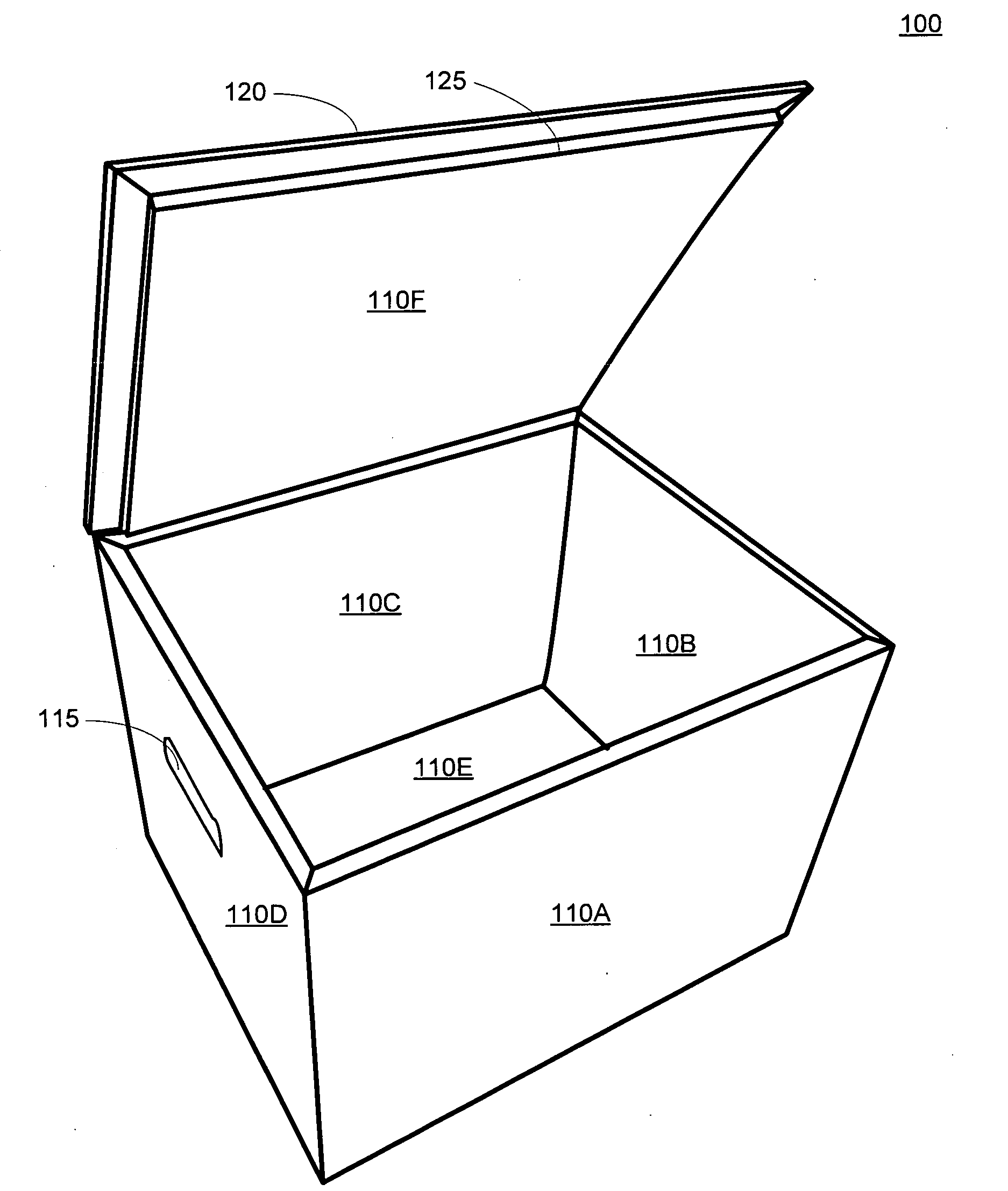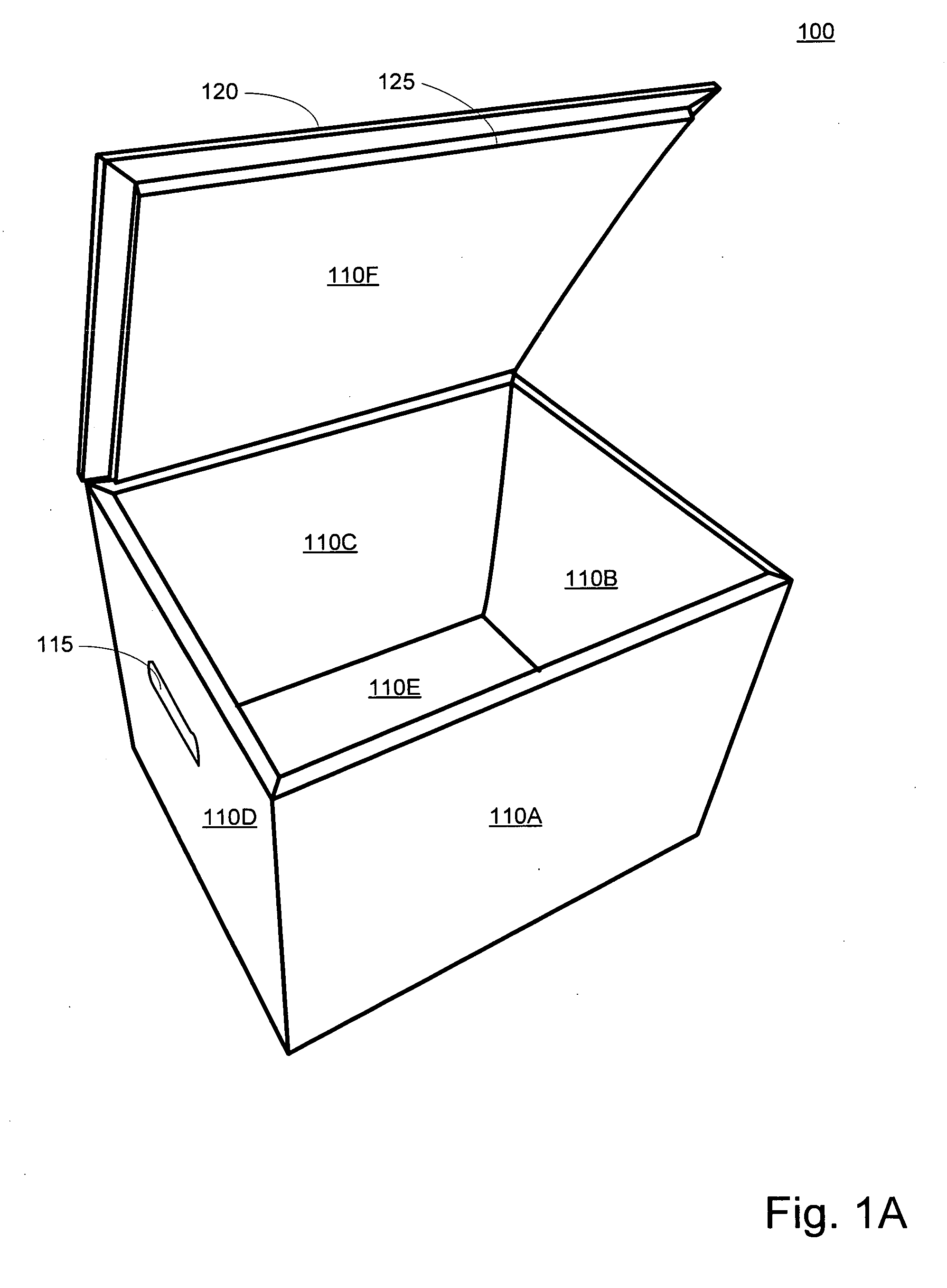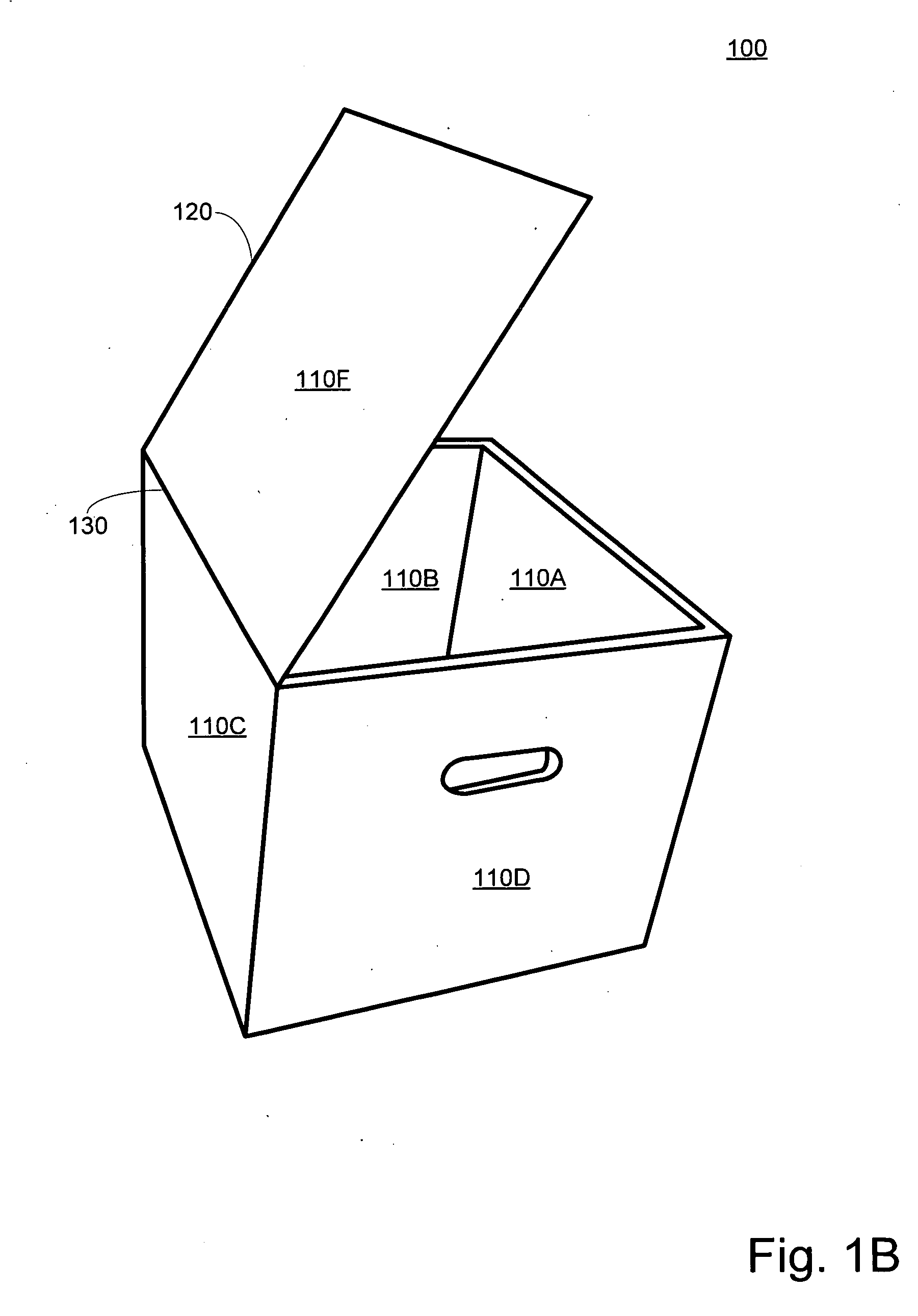Cellulose based recyclable container
a cellulose-based, recyclable container technology, applied in the direction of container preventing decay, domestic cooling apparatus, sustainable manufacturing/processing, etc., can solve the problems of inability to maintain styrofoam coolers for a long time, the probability of users discarding products, and the propensity to lose their tops, etc., to achieve convenient customization, prolong maintenance, and easy construction
- Summary
- Abstract
- Description
- Claims
- Application Information
AI Technical Summary
Benefits of technology
Problems solved by technology
Method used
Image
Examples
Embodiment Construction
[0024]The present disclosure of various embodiments of a container, as well as features and aspects thereof, is directed towards providing a portable container operable to substantially retard the transfer of energy from contents contained within its defined space, and / or the transfer of energy from outside its defined space, i.e. a cooler or thermally insulated container, and being comprised of multiple layers with each layer constructed from substantially similar materials such that the entire device is classified as biodegradable or recyclable without a requirement for deconstruction.
[0025]Generally, a cellulose based recyclable container is a portable device comprised of recyclable materials. Some embodiments comprise components constructed entirely of, or substantially of, cellulose. Other embodiments may be comprised of recyclable materials not classified as cellulose such as, but not limited to, cotton, bamboo, hemp, or other natural fibers. Although embodiments may be used t...
PUM
| Property | Measurement | Unit |
|---|---|---|
| transfer of energy | aaaaa | aaaaa |
| area | aaaaa | aaaaa |
| shape | aaaaa | aaaaa |
Abstract
Description
Claims
Application Information
 Login to View More
Login to View More - R&D
- Intellectual Property
- Life Sciences
- Materials
- Tech Scout
- Unparalleled Data Quality
- Higher Quality Content
- 60% Fewer Hallucinations
Browse by: Latest US Patents, China's latest patents, Technical Efficacy Thesaurus, Application Domain, Technology Topic, Popular Technical Reports.
© 2025 PatSnap. All rights reserved.Legal|Privacy policy|Modern Slavery Act Transparency Statement|Sitemap|About US| Contact US: help@patsnap.com



